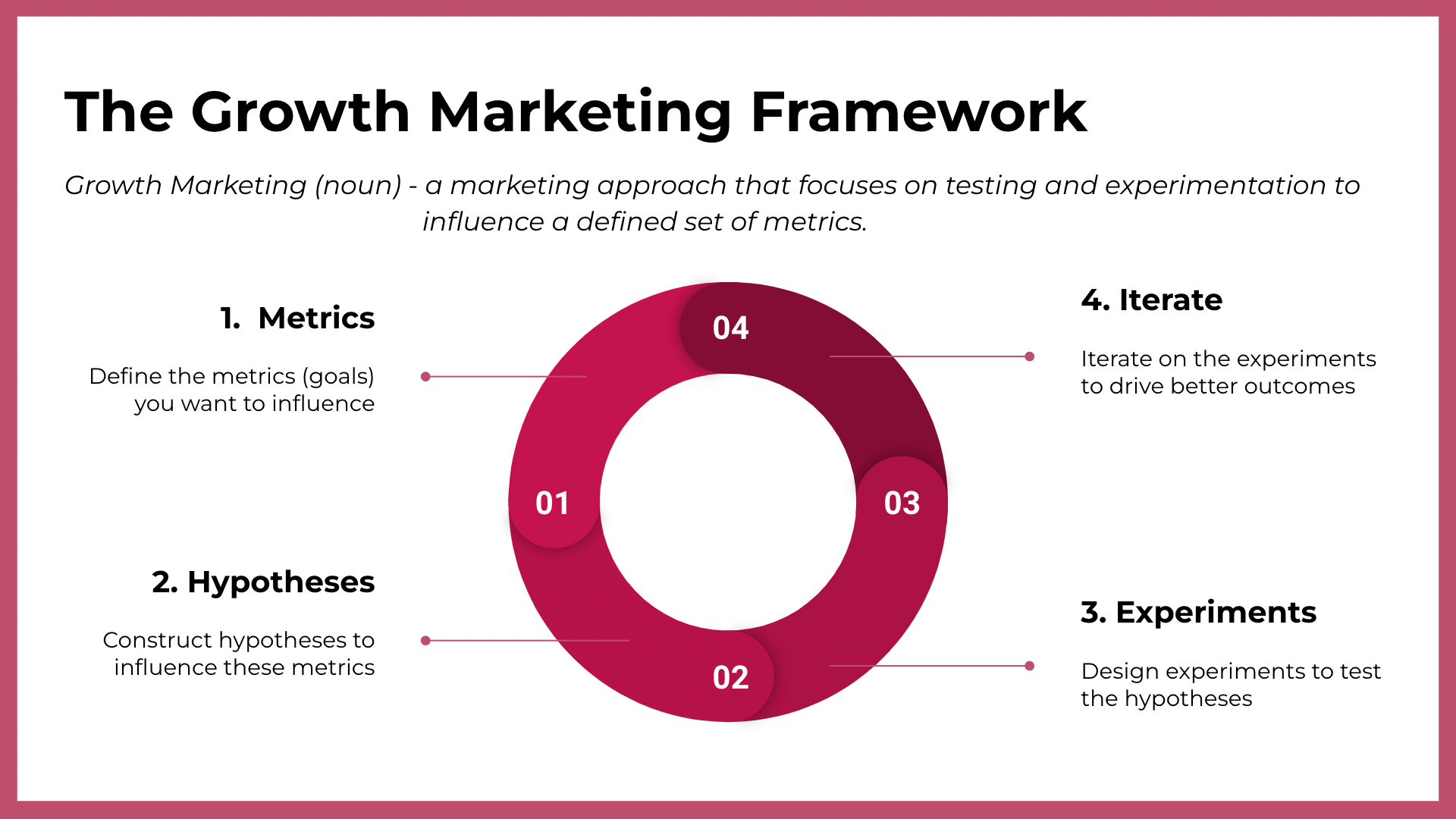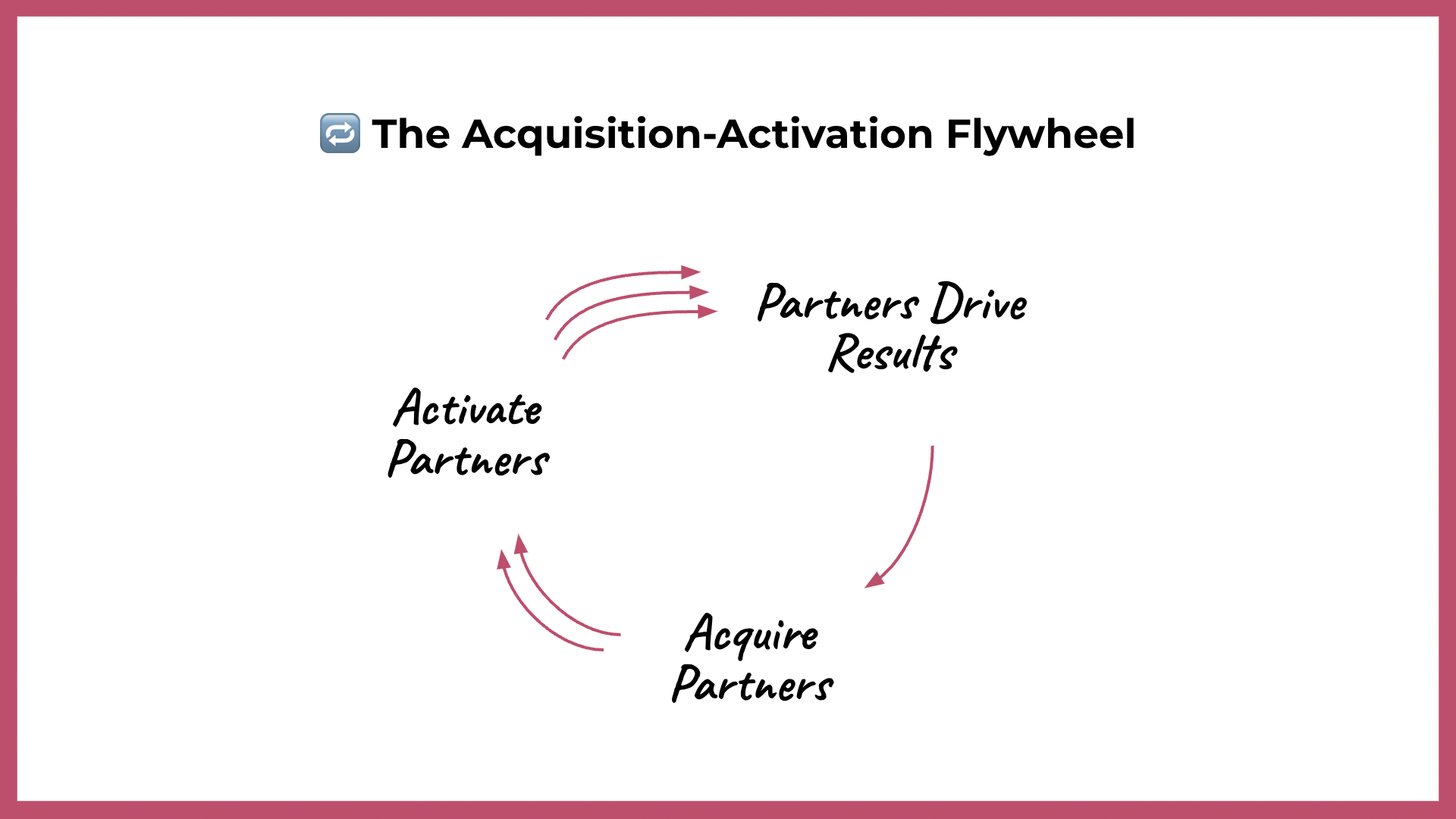The Growth Marketing Approach to Scaling Partner Programs
How to build a framework for experimenting and iterating around the acquisition-activation flywheel and spin it faster.

Summary
Having a growth marketing mindset to running your partner program can help you quickly develop a playbook for scale. We discuss how to build a framework for experimenting and iterating around the acquisition-activation flywheel and spin it faster.
Here's what we cover
Introduction (or what companies get wrong)
Most partner programs are run with a Business Development and Customer Success mindset i.e. "acquire" partners (business development) and then be best friends with them (customer success) to drive referrals. Such programs might be good enough to start with, but struggle to deliver hyper-growth.
Let's illustrate this with a very possible scenario:
A VC-backed company, under pressure, asks their partnerships team to drive 7% month-on-month lead growth. The partnerships team does the obvious–they tighten the screw on their partners.
While there's nothing wrong with this approach, it doesn't scale beyond a few months.
And this is why having a growth marketing mindset for partnerships makes sense. This mindset forces you to test and iterate your approach over time, so when the time comes to scale you have a playbook of tested ideas ready.
Applying Growth Marketing to Partnerships
Before we dive into this further, what is growth marketing?
Let's break this down into a framework:
- Metrics – define metrics (goals) you want to influence
- Hypotheses – Construct a set of hypotheses to influence these metrics
- Experiments – Design experiments to test the hypotheses
- Iterate – Iterate on these experiments to drive better outcomes

This approach is easily applied to partnerships. Furthermore, it helps partner programs by letting them:
- Spread their bets by testing a number of growth ideas
- Develop a culture of continuous improvement
- Build a playbook of growth strategies over time
The cherry on top is that growth marketing loves flywheels and partner channels have a rather famous one. In fact, this flywheel is why partner programs are so scalable. Let's dig into it.
The Acquisition-Activation Flywheel
More on building scalable partner programs
The acquisition-activation flywheel is the defining growth loop of partner programs. Here's how it works:
- Acquire partners to join your program
- Activate your partners so they're empowered to deliver the metrics you want them to
- Activated partners drive your metrics or goals
It's a flywheel because the number of partners is cumulative. As you acquire your 10th partner, the first 9 are still spinning the flywheel. Over time, as you acquire and activate more partners the flywheel spins faster.

Here's what we can learn by evaluating the flywheel:
- Both of the actions of acquiring and activating partners spin the flywheel. In mature partner programs you may choose to focus on only activation and the flywheel still works
- Acquiring and activating should be made repeatable as much as possible
- As you onboard more partners it becomes important to run activation at scale
Now, back to growth marketing, it makes sense to construct our metrics, hypotheses, and experiments around this flywheel.
Setting Up Metrics and Hypotheses
As we discussed, the first two steps of the growth marketing framework involve defining our metrics and hypotheses.
When it comes to metrics, most partner programs aim to drive new leads but you might also consider brand awareness, retention, ARPA etc.
Once you've established your metrics, start crafting hypotheses around the Acquisition-Activation flywheel. What activities will help you acquire and activate partners? This is best done in a brainstorming session with inputs from your team, adjacent functions, and partners, to come up with a list of ideas.
Once we've established our metrics and a set of hypotheses we can set up our experiments.
Experimentation for Partner Acquisition
Partner acquisition is the most intuitive activity to a partner manager. After all, you can’t start a partner program without partners, can you?
Partner acquisition experimentation helps you, over time, onboard the best partners. In essence, you're building a repeatable process that helps you:
- Understand which current partners are successful and why
- Create a strategy to acquire more of these partners
You can also use experimentation to evaluate partners in new areas or verticals through the following method (which also works if you're just kicking off your partner program):
- Create your partner personas–what does your partner look like, what challenges do they face, and how do you help them?
- Draw out a short list of partners
- Interview these partners and soft-pitch them the program. Your goal here is to see what iterations you may need to make to your partner product or personas.
- Build out a larger list of partners and continue pitching
Experimentation for Partner Activation
Partner activation is incredibly important for partner programs to be successful. It's also an area where most partner programs don't commit enough resources towards.
Here are some of the myriad of things that partner activation may look like:
- Onboarding
- Product training (and re-training)
- Running campaigns to help partners convert customers
- Partner incentives
- Sales training
- Catch-ups (meetups, QBRs, etc.)
- Co-marketing (field marketing, cross-marketing, PR etc.)
- And many more...
It's a laundry list of activities which makes having an experimental mindset key.
I recommend designing campaigns as "experiments", with a fixed timescale, and metrics that you want to track. Over time, you'll get a sense of which campaigns perform better, and can start repeating them.
Should You Run Sprints?
In short, yes.
At Hoolah.co, we ran 2-week sprints for our partner campaigns. This way we could test ideas every 2 weeks. For campaigns that needed more time, we extended the timeframe to 4 weeks, with a catchup after 2 weeks.
Every 2 weeks we would run retrospectives as a team so that we could check in on outcomes and exchange learnings. Having this structure also helped, and built urgency around kicking-off and delivering campaigns.
Translating Experiments into Growth
When an experiment performs well, that’s a “block” that you can now repeat to drive that metric. If it's repeatable enough, that can justify headcount and justify a hire.
It's great to have these blocks ready when you're under pressure to drive high growth (or that 7% month-on-month that we discussed). You can repeat these blocks at scale. This could mean:
- adding budget to a marketing campaign
- running a co-marketing campaign with partners or
- pushing through an incentive
What's important is going through the growth marketing process, so that you build your own playbook and create your own blocks.
Thanks for reading so far, and good luck with scaling your partner program. Feel free to check out other partner-related content on my blog.
Is Your Startup Ready for a Reseller Program?
Building A Partner Product (Program) That Partners Love
If you have questions or are curious to learn more, feel free to hit me up on LinkedIn or Twitter. 👋
You can also follow me or hit subscribe to keep in touch. I write regularly about growth, marketing, and partnerships in tech and fintech.

